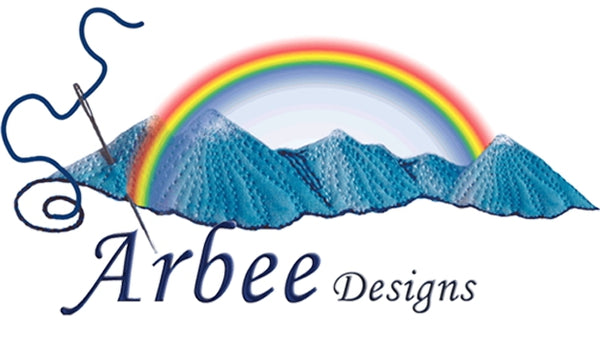Fusible webbing is a sticky bonding that adheres two fabrics together. It comes in many different brands, each being slightly different. Most Fusible webbing has a paper on one side, some have a paper on both sides, while others have no paper at all. I recommend using one of the fusibles with paper rather than the non-paper fusible when you need to transfer templates.
For fusible webbing with paper on both sides, you need to be careful which side you draw on. One side is easily removed. This side is pressed to your appliqué fabric so do not draw on this side as it is removed before the shape is cut out. Draw your design on the other side.
Which Fusible is best?
Heavy fusibles are most commonly used when you do not intend to stitch through them. You should choose a lightweight fusible that can easily be stitched through for any applique work as heavy fusible can gum up your needle and machine.
I prefer the fusible that you purchase by the yard/meter over the pre-cut packaged type. You have less waste and are less likely to have to join sections for large applique pieces.
I recommend using vliesofix (product found in NZ, Australia, and Europe) or Steam-a-Seam 2 LITE and Wonderunder made by Pellon (in the USA). If you have a favorite that you use, we would like to hear about it.
How to use Fusible Webbing
Instructions on how to use fusible webbing will be given below, however, always be sure to read the manufacturer's instructions first.
When using fusible webbing, you will need to reverse your pattern. We do this because the fusible is pressed to the wrong side of your fabric. It is then flipped over so the applique can be adhered to the background, thus reversing the template. I reverse all the templates in my lessons for you so you can draw directly from the template, but not all patterns do this so be sure to keep this in mind when using fusible webbing in other projects.
When instructions refer to Teflon sheet, either parchment paper or baking paper are also suitable. The great thing about parchment paper and baking paper is that they can be replaced inexpensively. Teflon sheets are more expensive and should be cleaned from time to time.
When pressing fusible webbing always use two Teflon sheets, one on the ironing board and one on top of the webbing. This prevents sticky webbing bonding to the iron and the ironing board. Once you have webbing on either, it can make a mess (gooey black gunk) on your work which is difficult to remove.
Warning: Be especially careful of this if you are attending a physical class with other students. Be sure you use your own paper or Teflon sheet because no matter how careful you are, it will be the person in front of you who uses the iron that will leave the gooey gunk on the iron and it will be your project it comes off on.

Teflon Sheet and Baking Paper
All applique pieces need to be traced individually from REVERSED pattern onto fusible webbing. Include any inner lines of each piece when drawing. These will be tranferred to the right side (fabric side) after the piece is cut out.
Make sure that there is at least 1/4" between each traced piece.
Tip: Trace all pieces that use the same fabric together so that they can be cut out as one piece and ironed as a group for easier handling.
Once drawn onto fusible webbing, cut roughly outside the outer line of each piece of webbing. This will be cut more accurately when pressed on fabric to give a good clean cut while webbing and fabric have adhered together.
Press fusible webbing to the WRONG side of the fabric - sometimes we just plain forget this point, but once the fusible is stuck on the right side, it is impossible to remove so the fabric is wasted.

Lines drawn on fusible webbing before cutting out
After the fusible has adhered to the back of the fabric, cut out accurately on the OUTER line.
Trace any inside pattern lines through to the right side of the fabric using a quilting pencil. A light table or holding the section up to a window will help make the lines visible through the fabric.

Pattern lines transferred to right side of fabric with quilting pencil
Remove paper backing only when you are ready to adhere to the background.
Tip
Do you have difficulty removing the backing paper?
Use a pin to score the backing paper. This will make a rough edge that lifts up slightly from the webbing, thus making it easier to get a grip on the paper.

Score paper with a pin
Author: Ruth Blanchet



1 comment
I have always have difficulties applicating. I have been using the wrong wonderunder. Thank you for explaining the difference in the paper . thank You.